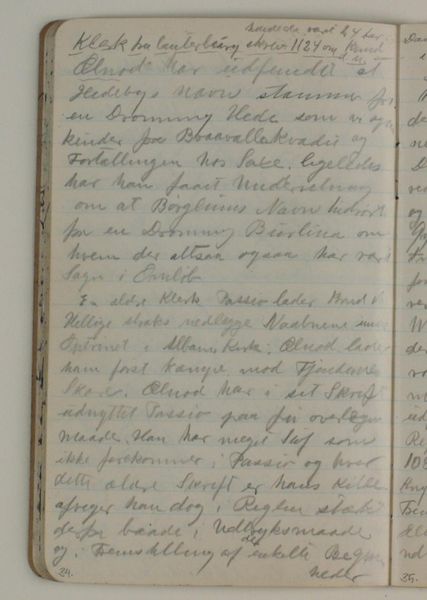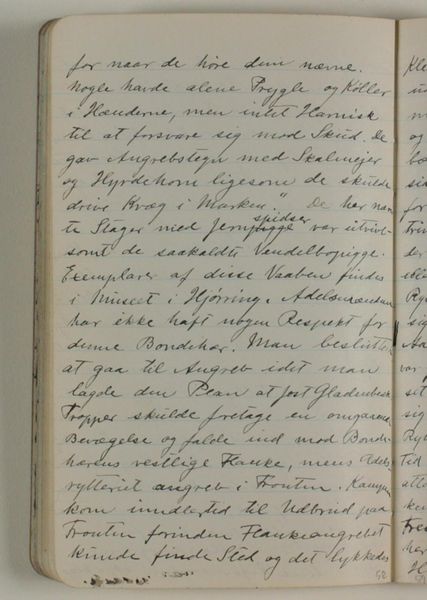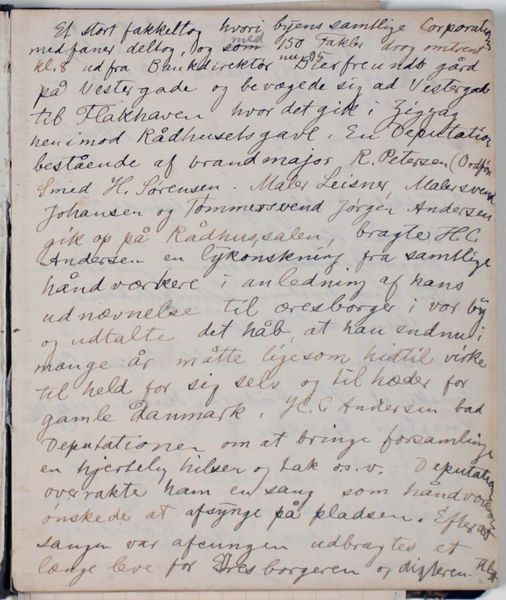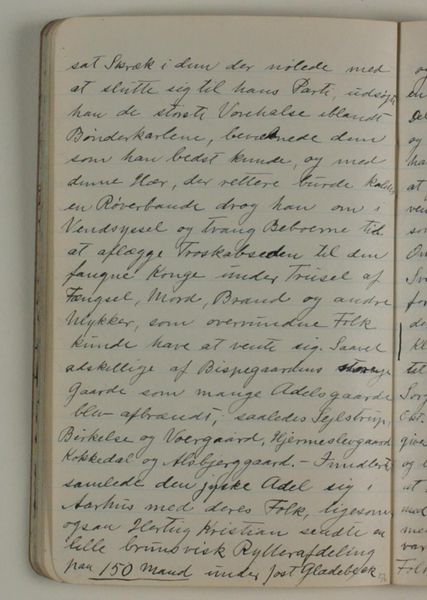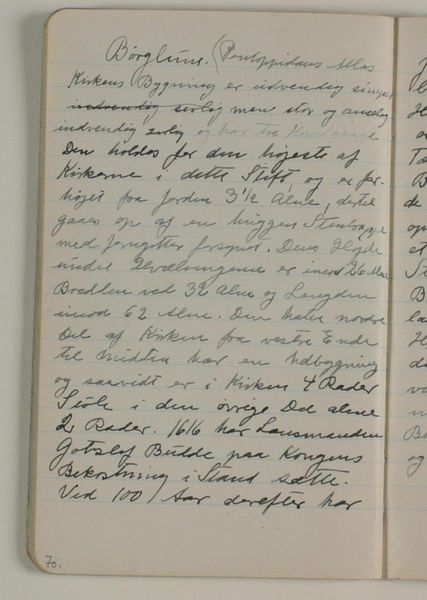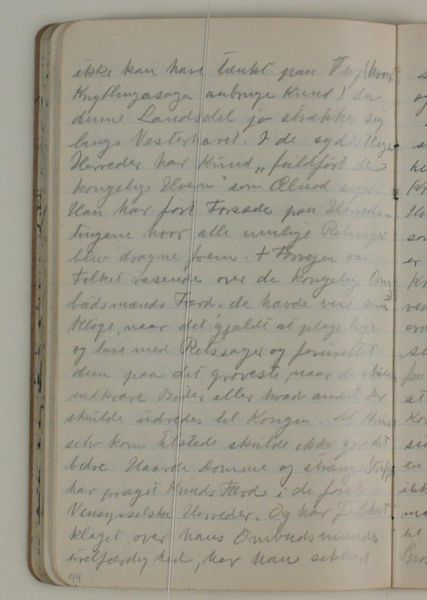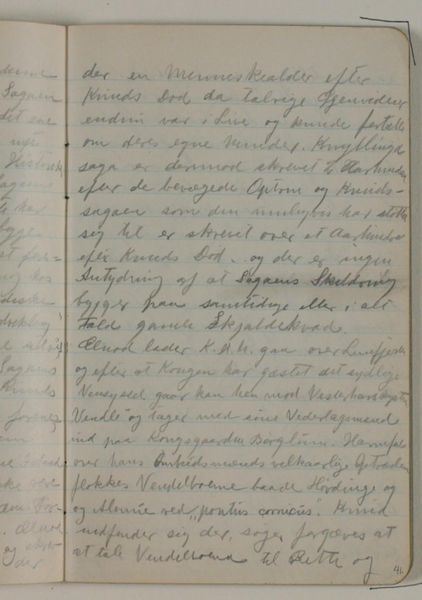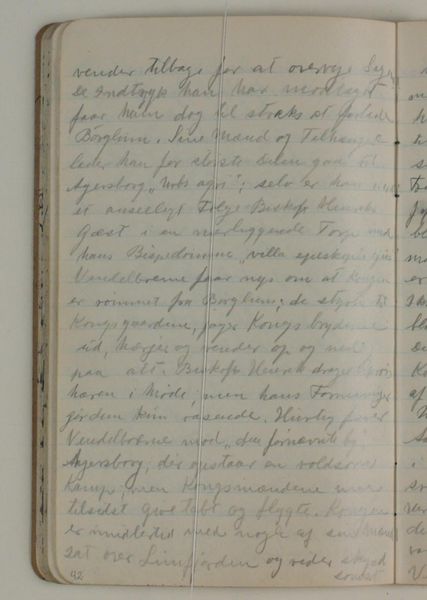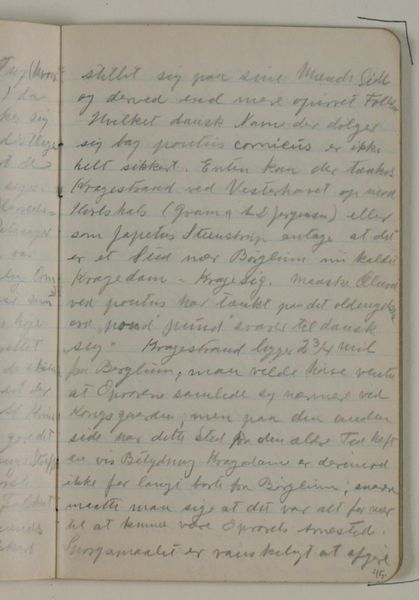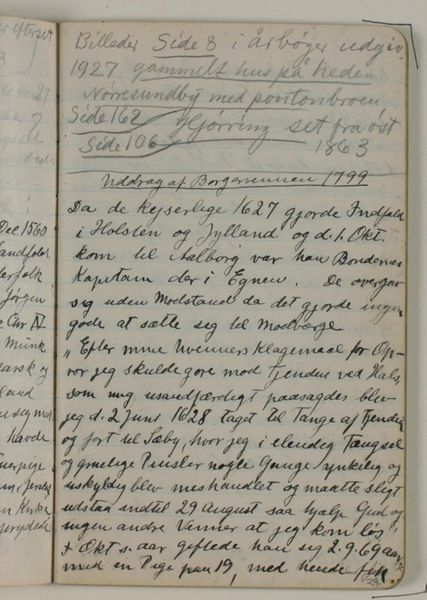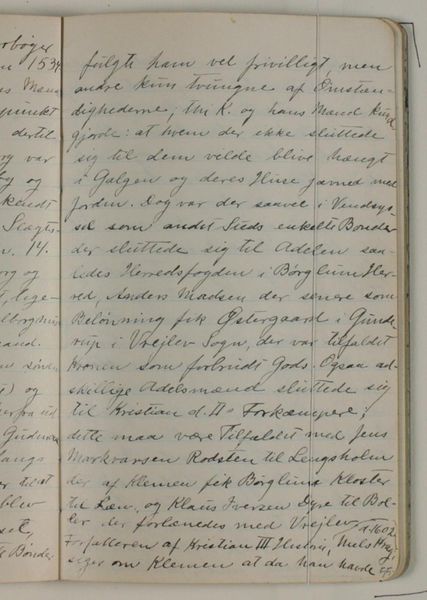
Notater vedrørende Peder Dyrskjøt. beretning om faderens død uddrag af "Borgervennen" 1799 1933 - 1934
0:00
0:00
drawing, textile, paper, ink
#
drawing
#
textile
#
paper
#
ink
Dimensions: 175 mm (height) x 109 mm (width) (monteringsmaal), 175 mm (height) x 109 mm (width) (bladmaal)
Curator: This piece, "Notater vedrørende Peder Dyrskjøt," created by Niels Larsen Stevns between 1933 and 1934, presents an intriguing image. It’s a drawing in ink on paper and textile, held at the Statens Museum for Kunst. Editor: It looks like handwritten notes, almost like a page ripped from a diary. The density of the script gives it a rather serious, historical mood, and it makes me wonder what's written in the old text. How do you interpret a work like this through the lens of art history? Curator: Well, first, let's consider the historical context. The artist created this in the interwar period in Denmark. What societal values or public needs might Stevns be responding to in his work? Editor: I suppose this recalls Denmark's history and culture, maybe at a time of uncertainty, focusing on a concrete Danish reference is a way of grounding the audience. Curator: Exactly. This could be a critical reflection on historical narratives or even an attempt to connect with a pre-industrial past amid rapid modernization. What political and social functions might such historical explorations fulfill? And does this reinforce established cultural narratives, or offer new perspectives? Editor: Interesting point. I didn’t initially think about its public role or how it might reinforce or challenge historical narratives. Now that I know, I can imagine that it definitely evokes an important period in Denmark's collective memory. Curator: It challenges me to think about how a society processes the past, especially through its art. Stevns prompts us to remember what public values are and reflect upon the contemporary function of such representation, what about you? Editor: I'll be sure to approach historical artwork not just for aesthetic enjoyment, but considering the cultural and political backdrop it brings to light.
Comments
No comments
Be the first to comment and join the conversation on the ultimate creative platform.
